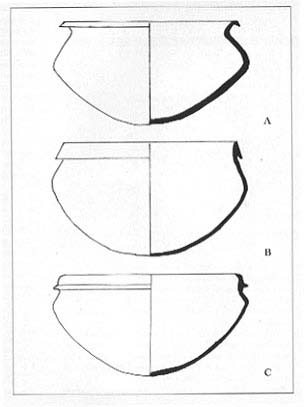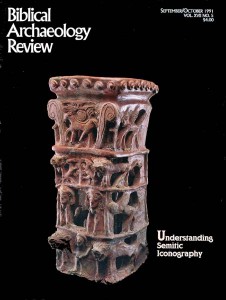Using Pottery Forms and Width Stratigraphy to Trace Population Movements
Sidebar to: Israel Enters Canaan—Following the Pottery Trail

Pottery forms change gradually, not all at once. That is why pottery sequences always overlap. Typically, one form gradually declines as another increases; thus, it becomes especially important in a survey (where for the most part we do not excavate the sites) to determine the relative quantity of specific pottery forms collected on the surface.
In our survey of the area allotted to the tribe of Manasseh, we used these relative quantities to date the movement and chart the direction of the new settlers.
During the Late Bronze Age (LB) (c. 1550–1200 B.C.E.), a single type of cooking pot was used throughout Canaan. This vessel, designated Type A by Amihai Mazar in his excavations at Giloh, has an everted triangular rim. It is well represented at all LB levels.11 In our excavation at Mt. Ebal, this is the principal type of cooking pot found in stratum II, which can be securely dated to the 13th century B.C.E. by two Egyptian scarabs and Mycenaean IIIB sherds.
Already a library member? Log in here.
Institution user? Log in with your IP address.

